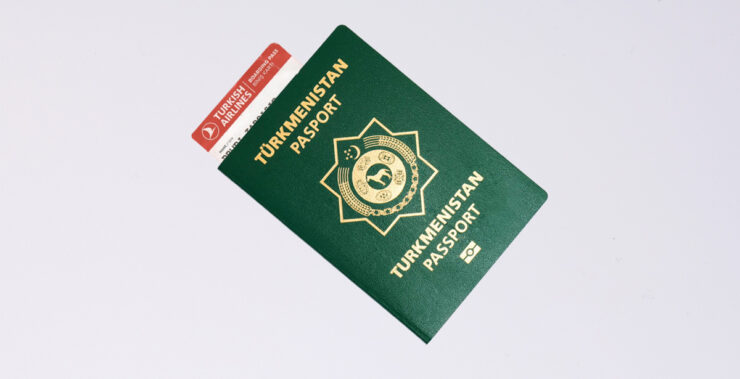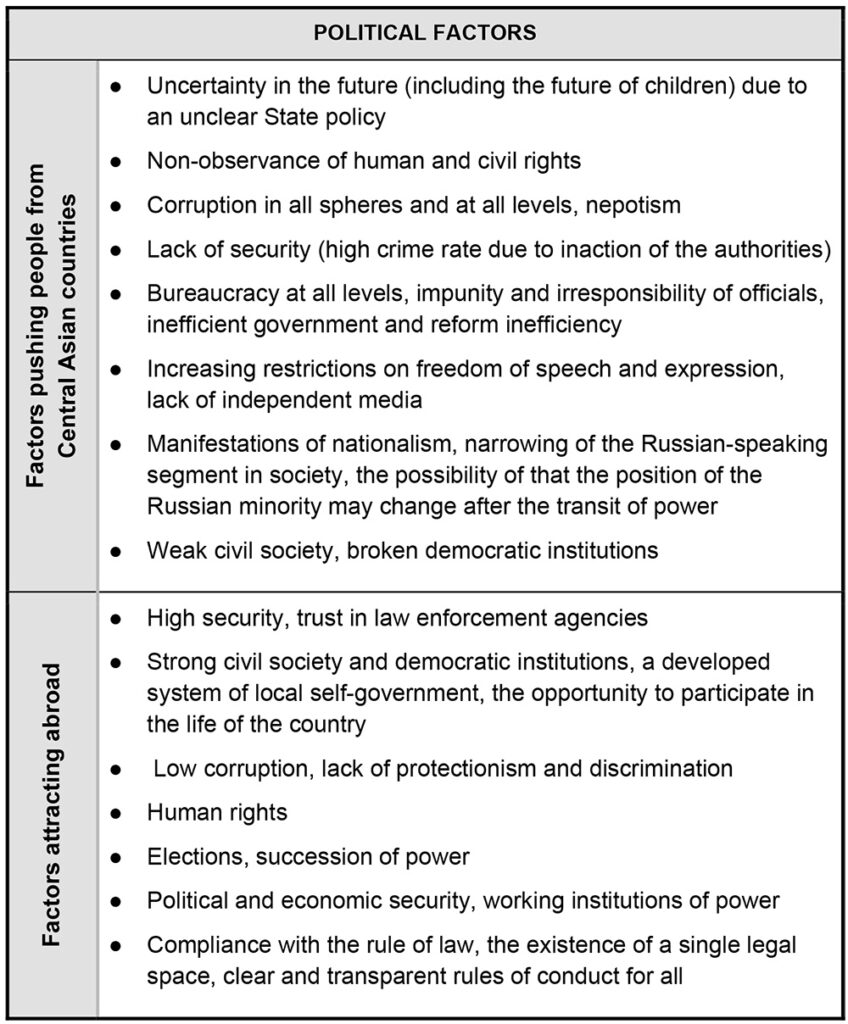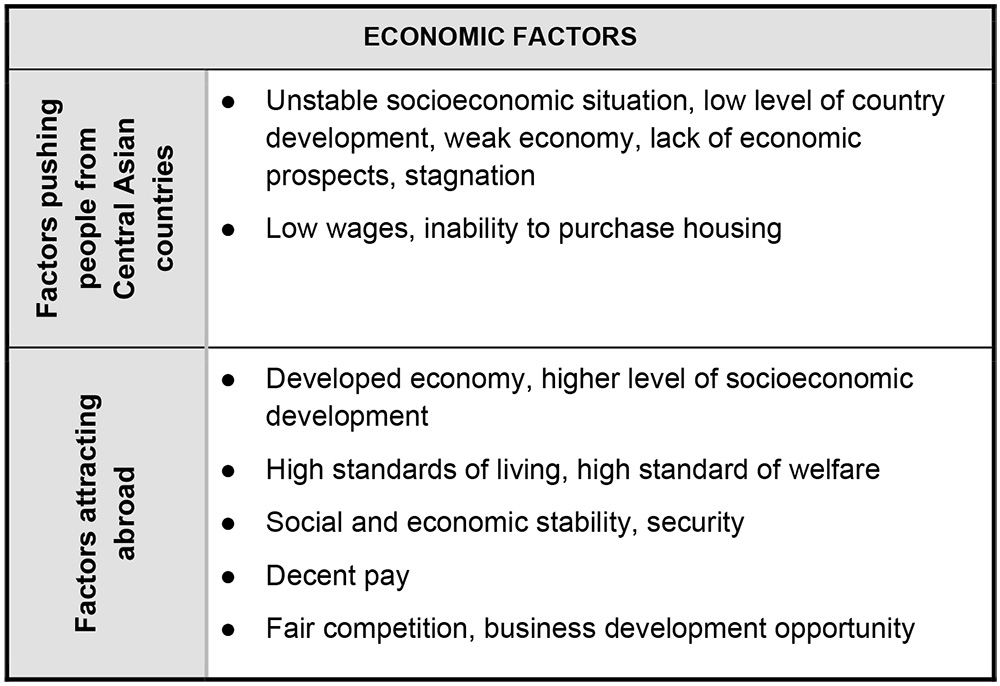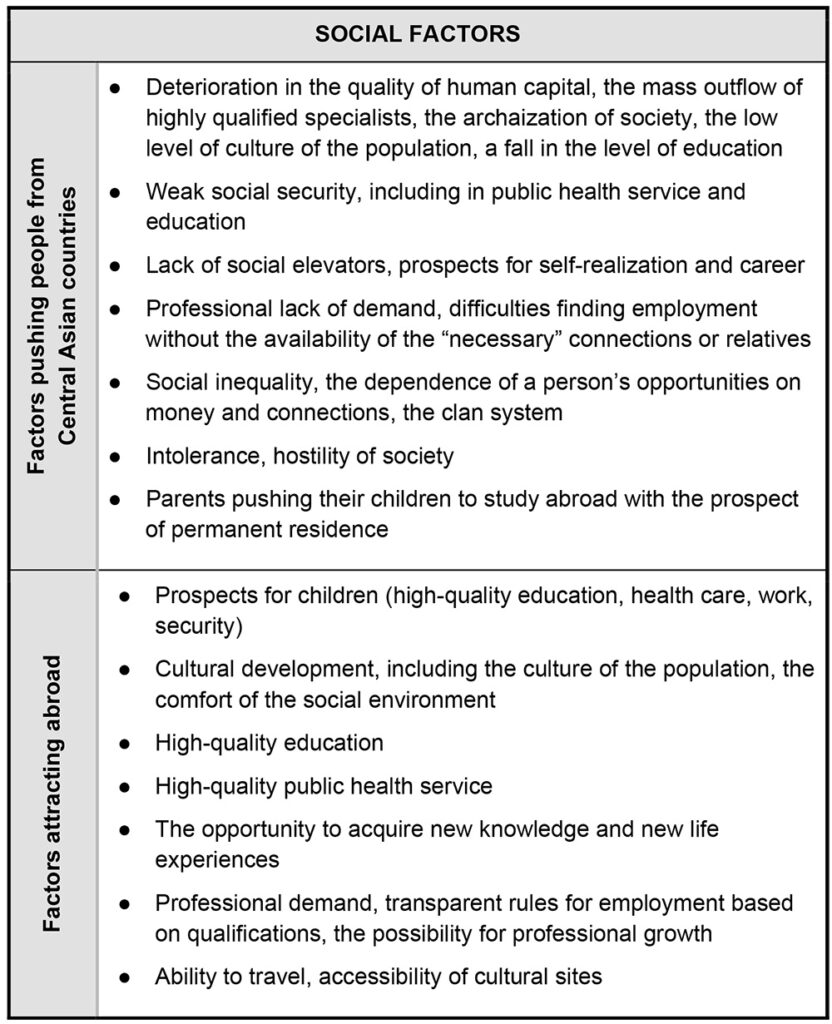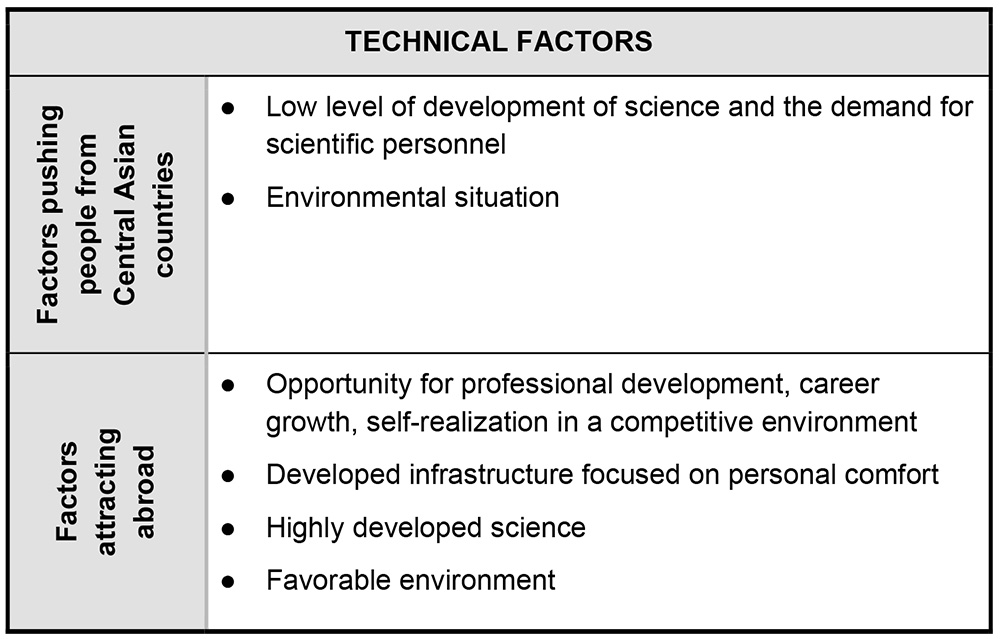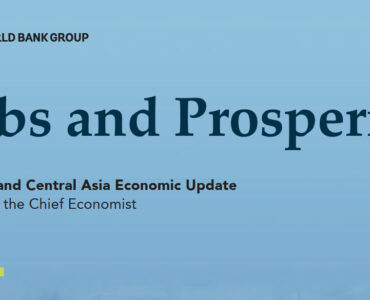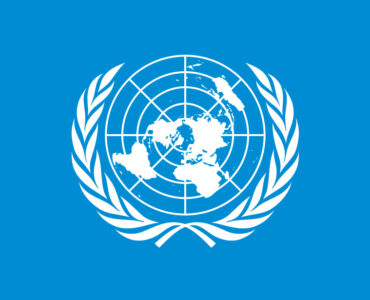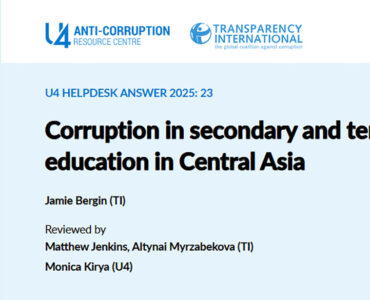Research study published by International Organization for Migration (IOM) “External Youth Migration in the Countries of Central Asia: Risk analysis and minimization of negative consequences” provides important and relevant insights for Turkmenistan, although the country has not been included in the study. As the report mentions, “for objective and subjective reasons, it was not possible to conduct the sociological and statistical research provided for by this project for Turkmenistan”. The reasons have not been specified and explained by IOM researchers.
This study examines the motives and drivers behind migration of young people from Central Asia. It finds a concerning trend where 30-35% of youth who emigrate never return back to their home countries leading to a potential loss of human capital. Below we briefly summarize the key findings and policy recommendations from this study.
Driving Forces Behind Youth Migration
- Economic factors are the primary drivers of youth migration from Central Asia. Young people are leaving the region in search of better economic opportunities, higher wages, and improved living conditions, often driven by a lack of opportunities in their home countries.
- Educational migration is also a significant trend, with many young people seeking higher quality education abroad. This trend is fueled by perceived shortcomings in the national education systems of Central Asian countries, such as corruption, outdated teaching methods, and limited opportunities for career advancement.
- Social and political factors also influence youth migration. These include a desire for personal freedom, political stability, better prospects for their children, and a desire to escape corruption and nepotism in their home countries.
Key Destinations and Trends in Youth Migration
- Key destinations: The Russian Federation remains the primary destination for both labor and educational migration from Central Asia. This is due to historical ties, geographical proximity, and a relatively open migration policy toward citizens of Central Asian countries. However, there is a growing trend of youth migration to countries such as South Korea, the United States, Turkey, and various European countries suggesting that young people are increasingly looking beyond Russia for opportunities.
- Age and gender: The majority of young migrants are between the ages of 25 and 29, representing those in their prime working years. This pattern highlights the potential negative impact of youth migration on the demographic and economic structures of Central Asian countries. While it is predominantly young men emigrating, there is a growing trend of feminization as more young women seek employment and educational opportunities abroad.
- Desire to emigrate permanently: A significant portion of young migrants express a desire to stay abroad permanently or for an extended period. This trend is particularly pronounced among those who have achieved educational and professional success in their host countries. For example, the rate for non-returning migration among youth in Central Asia is around 30-35%, which leads to a significant loss of valuable human capital and a shrinking workforce.
Economic Impact of Youth Migration in Central Asia
While it is difficult to quantify economic losses associated with migration, it nevertheless presents both positive contributions and some challenges.
Positive Impacts
Remittances: Young people migrating from Central Asia send remittances back to their families, which can help combat poverty and stimulate the economy.
- Investments: Young migrants can positively impact the economies of their home countries by investing in small businesses, mainly in the trade and service sectors.
- Circular Migration: When young people acquire new skills and knowledge abroad and return to use them in their home country, it can have a positive impact on the economy.
- “Bridge” Effect: Young migrants can act as a “bridge” between Central Asian countries and other countries, which can help with economic development, potentially through increased commerce.
Negative Impacts
Donate to support Turkmen analysts, researchers and writers to produce factual, constructive and progressive content in their efforts to educate the public of Turkmenistan.
SUPPORT OUR WORK- Brain Drain: Youth migration can lead to a “brain drain,” where qualified and highly qualified specialists leave Central Asian countries for opportunities abroad. This can negatively impact economic development in sectors like engineering and technology, as there are fewer skilled workers to fill these roles.
- Impact on Higher Education: For example, in Kazakhstan with a significant number of young people choosing to study abroad, universities see a decline in enrollment, leading to a weaker material base and lower admission requirements.
- Unsystematic Investment: While some young migrants invest money in their home countries, this investment is often small and unsystematic, particularly in the construction of social facilities.
- Limited Impact of Remittances: While remittances can help combat poverty, they do not always positively impact the economy and can contribute to inflation. In Kyrgyzstan and Tajikistan, the economic situation is particularly vulnerable due to a dependence on remittances and external investments.
Table 1. Factors stimulating youth migration from Central Asian countries
Source: IOM 2019.
As the survey results show the major motivation for youth to leave their homeland is corruption, bureaucracy at all levels, impunity and irresponsibility of officials and inefficient government. The majority of youth leave because they seek decent wages and the availability of social guarantees. And the major factor stopping many young people from returning to their homeland is difficulty getting a well-paid job.
Nevertheless, anywhere from 35.5% – 66.7% of young people in Central Asia help their country while abroad. This presents an opportunity for the Central Asian governments to tap into and leverage these young people’s expertise, connections and financial resources.
Policy recommendations center around strengthening data collection, fostering youth engagement in policy decisions, and promoting alternative narratives to migration.
The report emphasizes the need to:
- Improve the statistical systems to better capture the nuances of youth migration flows, including those not officially registered.
- Develop and implement youth-inclusive policies, recognizing young people as active stakeholders in shaping their futures rather than passive recipients of aid.
- Counter the dominant narrative of migration as the only viable option for a successful future by highlighting success stories and opportunities within Central Asia.
- Simplify recognizing foreign academic degrees to incentivize the return of highly skilled individuals.
- Develop more robust vocational training programs to equip young people with the skills needed for a competitive job market, both domestically and internationally.
- Create a more favorable environment for small and medium-sized businesses to flourish, encouraging entrepreneurial endeavors and potentially enticing returning migrants.
- Implement comprehensive reintegration policies to ease the return of migrants and facilitate their contribution to their home countries.
- Foster cooperation with the primary destination countries of youth migrants to exchange data and develop a more nuanced understanding of migration trends.
Authors of the report emphasize the need for Central Asian countries to adopt a holistic approach to address the root causes of youth migration, recognizing the complex interplay of economic, social, political, and personal factors that influence these decisions. This involves creating more inclusive and equitable societies that provide young people with genuine opportunities for personal and professional fulfillment within their home countries.

